MaryAnn Bernal's Blog, page 161
July 26, 2015
History Trivia - Perkin Warbeck’s army lands in Cork
July 26
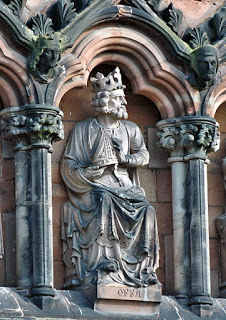
796 Offa, king of Mercia died. Many historians regard Offa as the most powerful Anglo-Saxon king before Alfred the Great.
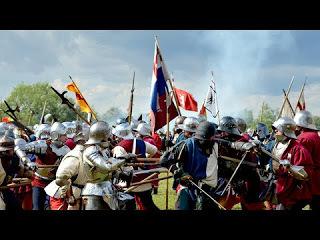
1469 Wars of the Roses: the Battle of Edgecote Moor pitted the forces of Richard Neville, 16th Earl of Warwick against those of Edward IV of England took place.
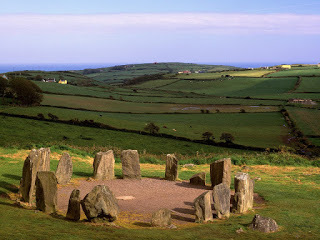
1497 "Edward IV's son" Perkin Warbeck’s army landed in Cork.

796 Offa, king of Mercia died. Many historians regard Offa as the most powerful Anglo-Saxon king before Alfred the Great.

1469 Wars of the Roses: the Battle of Edgecote Moor pitted the forces of Richard Neville, 16th Earl of Warwick against those of Edward IV of England took place.

1497 "Edward IV's son" Perkin Warbeck’s army landed in Cork.
Published on July 26, 2015 02:00
July 25, 2015
History Trivia - Constantinople recaptured by Nicaean forces
July 25
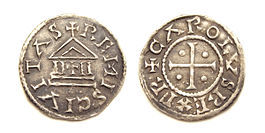
864 The Edict of Pistres of Charles the Bald ordered defensive measures against the Vikings.
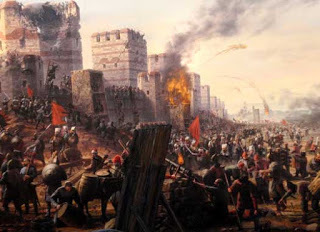
1261 The city of Constantinople was recaptured by Nicaean forces under the command of Alexios Strategopoulos, re-establishing the Byzantine Empire.
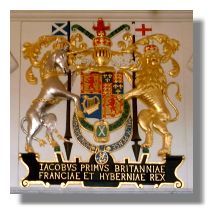
1603 James VI of Scotland was crowned as king of England (James I of England), uniting the Kingdom of England and Kingdom of Scotland into personal union. Political union would occur in 1707.

864 The Edict of Pistres of Charles the Bald ordered defensive measures against the Vikings.

1261 The city of Constantinople was recaptured by Nicaean forces under the command of Alexios Strategopoulos, re-establishing the Byzantine Empire.

1603 James VI of Scotland was crowned as king of England (James I of England), uniting the Kingdom of England and Kingdom of Scotland into personal union. Political union would occur in 1707.
Published on July 25, 2015 02:00
July 24, 2015
A virtuous Viking: the medieval legend of Havelok the Dane
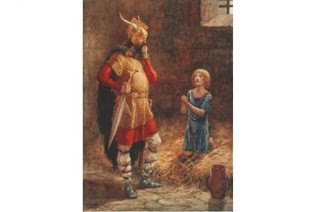 Havelok begs mercy of Godard, from ballad Havelok the Dane. (Adams, Frank/ Private Collection/©Look and Learn/Bridgeman Images)
Havelok begs mercy of Godard, from ballad Havelok the Dane. (Adams, Frank/ Private Collection/©Look and Learn/Bridgeman Images) History Extra
Many regions of England are fascinated by their Viking heritage, and that was as true in the medieval period as it is today. Here, Dr Eleanor Parker from the University of Oxford explores one particularly popular Viking legend…
Everyone knows the stereotypical image of a Viking: a daring, rapacious warrior who rejoices in fighting and killing, sailing the seas and pillaging monasteries with a certain ruthless glamour. Later medieval writers were familiar with this stereotype too, and many delighted in exaggerated, bloodthirsty tales of Vikings murdering nuns, impaling babies on spears, and carving eagles on the backs of their enemies. But that’s only one aspect of the legend of the Vikings, and some medieval texts tell very different stories about what the Vikings did in England.
Medieval writers interested in England’s history – especially in the north and east of England – knew that Scandinavians had not just raided and plundered in the region, but also settled there. There are various legends exploring how and why this settlement came about, and the most famous involves Lincolnshire's very own Viking hero, Havelok the Dane.
Stories about Havelok, a Danish prince who came to rule part or all of England, are first recorded in the 12th century, but may well be much older. The best-known version of the story is a Middle English romance, written probably at the end of the 13th century, known simply as Havelok. It’s a lively, fast-moving poem, frequently funny but with an underlying concern for important questions about what makes a good ruler and a just society. It's cheerfully violent but always scrupulously fair: kindness is rewarded, cruelty punished, and the rightful king restored to his proper place.
The poem tells the twin stories of Havelok and his wife, the English princess Goldeboru. Set in a distant past, which is recognisably Anglo-Saxon England, the poem begins with the deaths of the fathers of Havelok and Goldeboru, kings of Denmark and England respectively. The young orphaned heirs are both deprived of their inheritance by wicked usurpers: the English villain has Goldeboru imprisoned, while the Danish villain murders Havelok’s little sisters and arranges for Havelok to be drowned by a man named Grim. Grim can’t bring himself to kill the child, so he smuggles Havelok out of Denmark and flees to England with his wife and family.
Grim and his family, with the young royal exile, land on the coast of Lincolnshire, where Grim settles down to the life of a fisherman. He works hard and his business prospers, and the poem tells us that the place where they made their home came to be named after its founder: Grimsby.
Havelok grows up to be incredibly tall and strong, but in other respects he is almost comically unlike the stereotype of a Viking: he is cheerful, patient, good-tempered, and gentle to women and children. When he reaches adulthood he decides he ought to earn his own living, and he sets off for Lincoln, where he finds a job as a kitchen-hand.
Everyone is impressed by his great strength and his sheer niceness, and he comes to the attention of the treacherous regent of England, who decides to humiliate Goldeboru by forcing her to marry this unsophisticated kitchen boy. (He had promised the late king he would marry Goldeboru to ‘the highest man in England’, a condition the unusually tall Havelok technically fulfils.)

Lincoln Castle. According to the chronicler Robert Mannyng, in the 14th century you could see the huge rock that Havelok, with his extraordinary strength, threw to win a stone-casting competition. © Timbphotography | Dreamstime.com
Havelok is unwilling and Goldeboru is horrified, but they have no choice, so they marry and return to Grimsby. On their wedding night Goldeboru has an angelic vision that reveals to her that Havelok is actually a king's son, while Havelok dreams of his homeland: he imagines embracing Denmark in his arms, and bringing its people across the sea to England as a love-gift to his new wife. When they share their dreams with each other, Goldeboru urges Havelok to return to Denmark and win back his inheritance. He does so, then comes back to England to regain Goldeboru's kingdom too. The two of them rule England and Denmark together in a state of perfect peace and harmony for 60 years, and have 15 sons and daughters.
Havelok is a kind of historical fantasy, but it’s firmly rooted in the English landscape and in plausible reality: Grimsby, for instance, probably was named for a Scandinavian settler, although perhaps not the saviour of an exiled Danish prince. The medieval poet knew that Danish settlement was part of the history of this region, and seems to have thought it something to be proud of.
In this he was not alone. The foundation story was a lasting source of pride in Grimsby: the town's 13th-century seal depicts Grim brandishing a sword and shield, Havelok and Goldeboru on either side of him. Grimsby might not seem like a very glamorous location for a romance to take place – it's not exactly Camelot – but in the Havelok legend it has a founding father and an origin myth all of its own.
Beyond Grimsby, too, the Havelok story seems to have been widely known in Lincolnshire: the chronicler Robert Mannyng tells us that in the 14th century you could go to Lincoln Castle and see the huge rock that Havelok, with his extraordinary strength, threw to win a stone-casting competition, as well as the chapel where Havelok and Goldeboru were married.
The legend of Havelok offers a reimagining of English history that finds a balance between a proud regional identity and a sense of national unity. It’s a version of Anglo-Saxon history in which the Danes can be easily integrated into English society: the characters inhabit a North Sea world in which fishermen and merchants travel freely between England and Denmark, and Havelok and Grim’s children, Danish by birth, all marry into English families.
It's as if the poet decided he was going to present an alternative version of the many stories of Viking violence; his Danish protagonists are industrious, honest and virtuous. At one point the English villain tries to paint Havelok as a rampaging Viking, claiming he is killing monks and burning churches, but in fact Havelok is notably pious and even founds a priory in Grimsby in memory of Grim.
In this poem the Danish contribution to English history is presented in an entirely positive light – as something Grimsby, Lincolnshire, and England can and should be proud of.
Dr Eleanor Parker is Mellon Postdoctoral Fellow in Anglo-Norman England at the University of Oxford. She blogs about medieval England at www.aclerkofoxford.blogspot.co.uk. You can follow her on Twitter @ClerkofOxford.
Published on July 24, 2015 07:00
History Trivia - Mary, Queen of Scots, abdicates
July 24
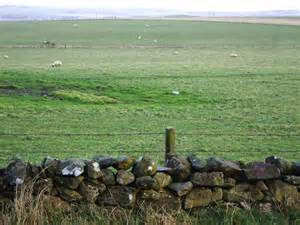
1411 Battle of Harlaw, Highland and Lowland Scots clashed at Red Harlaw, which was one of the bloodiest battles of Scottish history.
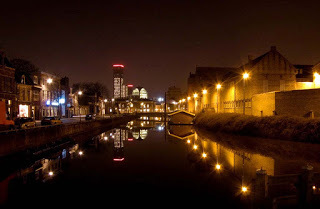
1487 Citizens of Leeuwarden, Netherlands held a strike against a ban on foreign beer.
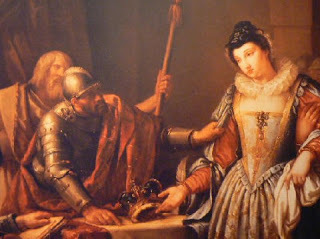
1567 Mary, Queen of Scots, was forced to abdicate and was replaced by her one-year-old son James VI.

1411 Battle of Harlaw, Highland and Lowland Scots clashed at Red Harlaw, which was one of the bloodiest battles of Scottish history.

1487 Citizens of Leeuwarden, Netherlands held a strike against a ban on foreign beer.

1567 Mary, Queen of Scots, was forced to abdicate and was replaced by her one-year-old son James VI.
Published on July 24, 2015 01:00
July 23, 2015
Ancient Monastery Recreates Beer Based on Historic Recipe by British Soldiers
 Ancient Origins
Ancient OriginsThe Strahov Monastery in Prague, Czech Republic, has created a popular new beer based on a historic recipe. The Times of India report that they call it the Sv Norbert India Pale Ale and it is based on a recipe that British soldiers brewed for their travels to India when it was under British rule.
Brewing beer is not a new area for the ancient Strahov Monastery. The monastery was founded in 1142 by King Vladislav II. It started production in its brewery in the 1400s. The current location of the Strahov Monastic Brewery is the site chosen by Abbot Kaspar Questenberg in 1628. In the beginning, the Strahov brewery only produced the necessary amount for the monks and the deputies of the monastery, now it is one of the most popular breweries for tourists and locals in Prague.
 The Strahov monastery, Prague, Czech Republic (
Wikimedia Commons
)Monastic breweries were a common practice during the middle ages (5th – 15th Century). Monks and nuns were expected to live by their own labor and not accept charity (The Rule of Saint Benedict, and monasteries were known to be safe places for travelers in search of food and shelter. Thus, brewing beer and wine also served as a source of finances for monasteries such as Strahov.
The Strahov monastery, Prague, Czech Republic (
Wikimedia Commons
)Monastic breweries were a common practice during the middle ages (5th – 15th Century). Monks and nuns were expected to live by their own labor and not accept charity (The Rule of Saint Benedict, and monasteries were known to be safe places for travelers in search of food and shelter. Thus, brewing beer and wine also served as a source of finances for monasteries such as Strahov. A Monk Cellarer tasting wine from a barrel, Li Livres dou Santé, (13th Century manuscript), France (
Wikimedia Commons
)The Sv Norbert India Pale Ale is a beer that the Strahov Monastic Brewery created based off of a recipe thought to have been lost. In 2009 they began production of the India Pale Ale, however it was not well-received in the early years. The manager of the Strahov Monastic Brewery, Marek Kocvera, explained the history of the India Pale Ale to The Times of India: "We revived the recipe in this monastery and started first serving it in 2009. However because of its strong flavour it did take a few years for people to grow a taste for it."
A Monk Cellarer tasting wine from a barrel, Li Livres dou Santé, (13th Century manuscript), France (
Wikimedia Commons
)The Sv Norbert India Pale Ale is a beer that the Strahov Monastic Brewery created based off of a recipe thought to have been lost. In 2009 they began production of the India Pale Ale, however it was not well-received in the early years. The manager of the Strahov Monastic Brewery, Marek Kocvera, explained the history of the India Pale Ale to The Times of India: "We revived the recipe in this monastery and started first serving it in 2009. However because of its strong flavour it did take a few years for people to grow a taste for it."Archaeologist attempts to revive lost alcoholic beverages from ancient recipes and residuesThe Modern Recreation of Ancient Sumerian BeerArchaeologists Virtually Recreate Ancient Egyptian BreweryAlcohol as medicine through the agesThe India Pale Ale is a strong-tasting beer with a 6-7% alcohol content due to the large quantity of hops it contains. "This beer was originally prepared for long distance transport, so it should stay in good conditions during the journey from England to India... Hops contain natural antibacterial matters and they help to preserve beer," Kocvera told The Times of India.
The hops also makes the Sv Norbert India Pale Ale bitter and aromatic. The aroma of the beer has been described as very fruity and despite its strength it is believed to be a refreshing beer. The distinctive taste has made it a popular seller today, Kocvera has reported:
"Since last year, we are experiencing a big boom in its sale. We produce about 60,000 litres of India Pale Ale per year - so around 160 litres per day on average. In most days, the daily quantity finishes by late noon itself."
In the end, the historic British soldier's recipe has received an enthusiastic response from the public and continues the historic success of monastic breweries.
Featured Image: Piwo pijacy mnisi (Beer Drinking Monks), Olaf Simony Jensen ( Wikimedia Commons )
By Alicia McDermott
Published on July 23, 2015 07:37
4,000-Year-Old Relief Carvings and Decorated Stone Blocks Discovered in Temple of Serapis in Egypt
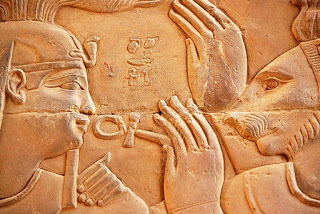 Archaeologists in Egypt have discovered two 4,000-year-old reliefs in the Temple of Serapis on the Red Sea. The Egyptian Antiquities Minister Mamdouh Eldamaty announced last week that discoveries also included blocks of stone engraved with a goddess and a bounty of flowers.
Archaeologists in Egypt have discovered two 4,000-year-old reliefs in the Temple of Serapis on the Red Sea. The Egyptian Antiquities Minister Mamdouh Eldamaty announced last week that discoveries also included blocks of stone engraved with a goddess and a bounty of flowers.A team of Polish archaeologists found the two raised wall carvings in a Temple of Serapis which once belonged to the Ptolemaic Queen Berenice.
According to The Siasat Daily, the reliefs date to the Middle Kingdom (2050-1750 BC) and the Second Intermediate Period (1650-1550 BC), eras long before the temple’s actual construction date, suggesting they were brought in later.
ZeeNews reports, “The first relief has a cartouche containing the name of the Pharaoh Amenemhat IV - the seventh and next-to-last pharaoh of the 12th Dynasty - whose reign was characterized by exploration expeditions for precious turquoise and amethyst, while the second relief, quite damaged, requires restoration.”
Egyptian Alexandria - Ancient underwater finds revealed the Pharaonic roots of the Ptolemaic City The destruction of the Great Library of Alexandria Rosetta-style engraving lauding Cleopatra I and two Ptolemaic Pharaohs unearthed in Egypt The team of archaeologists at the temple also recovered several stone blocks which were originally bases for statuary. The stones are said to be highly decorated and engraved with lotus and papyrus flowers, a goddess image, and writing in Greek.
 Partial titulary of pharaoh Amenemhat IV (end 12th Dynasty) on a relief from the temple of Medinet Maadi, Faiyum. Representational image. (
CC BY-SA 2.0
)Serapis was a Greco-Egyptian god and patron of Alexandria who was often depicted as a Greek man dressed in Egyptian clothing; a symbol of unity between Greeks and Egyptians under Ptolmey I in the third century BC. Even his name was a blend of the Egyptian Osiris and the Apis bull (Osiris + Apis = Oserapis/Sarapis). He represented abundance and resurrection.
Partial titulary of pharaoh Amenemhat IV (end 12th Dynasty) on a relief from the temple of Medinet Maadi, Faiyum. Representational image. (
CC BY-SA 2.0
)Serapis was a Greco-Egyptian god and patron of Alexandria who was often depicted as a Greek man dressed in Egyptian clothing; a symbol of unity between Greeks and Egyptians under Ptolmey I in the third century BC. Even his name was a blend of the Egyptian Osiris and the Apis bull (Osiris + Apis = Oserapis/Sarapis). He represented abundance and resurrection. Head of Serapis, from a 12-foot statue found off the coast of Alexandria. (
CC BY 3.0
)Temples devoted to Serapis were called serapeum, and the cults of Serapis flourished under the Ptolemaic kings who ruled ancient Egypt. The grandest serapeum was said to be in Alexandria.
Head of Serapis, from a 12-foot statue found off the coast of Alexandria. (
CC BY 3.0
)Temples devoted to Serapis were called serapeum, and the cults of Serapis flourished under the Ptolemaic kings who ruled ancient Egypt. The grandest serapeum was said to be in Alexandria. The remains of the ancient site of the Temple complex of Sarapis at Alexandria. It once included the temple, a library, lecture rooms, and smaller shrines but after many reconstructions and conflict over the site it is mostly ground level ruins. (Iris Fernandez/
CC BY 2.0
)
Pharaoh bows to god of gods in newly discovered quarry carving
The origins of the ancient Coptic Church of Egypt
The establishment of the cult and temples of Serapis were one of many symbols of Ptolemaic legitimization in ancient Egypt. The Pharos of Alexandria was one of the Seven Wonders of the Ancient World and the most famous lighthouse in antiquity. The incredible feat of ancient engineering stood at an impressive height of 130 meters (430ft) until it was destroyed by an earthquakes in the 14th century AD.
The remains of the ancient site of the Temple complex of Sarapis at Alexandria. It once included the temple, a library, lecture rooms, and smaller shrines but after many reconstructions and conflict over the site it is mostly ground level ruins. (Iris Fernandez/
CC BY 2.0
)
Pharaoh bows to god of gods in newly discovered quarry carving
The origins of the ancient Coptic Church of Egypt
The establishment of the cult and temples of Serapis were one of many symbols of Ptolemaic legitimization in ancient Egypt. The Pharos of Alexandria was one of the Seven Wonders of the Ancient World and the most famous lighthouse in antiquity. The incredible feat of ancient engineering stood at an impressive height of 130 meters (430ft) until it was destroyed by an earthquakes in the 14th century AD.Egyptian authorities have this year approved plans to rebuild the towering monument.
Featured Image: Relief carved from stone featuring Ptolemy XIII of Egypt and the deity Isis. Representational image. ( CC BY-SA 3.0 )
Ancient Origins
Published on July 23, 2015 07:31
Knight of the Dixie Wilds by K. Meador - an excerpt

"Now, Uncle Joe, haven't I always been your friend and kept you clear of trouble when I could. Don't go back on me now. Think of that poor, frightened girl, alone up younder in the swamp crying her eyes out for her home and people. There is very little danger to do what I ask."
Amazon Link
No period in the history of the United States of America forms a field so rich with chivalry, romance and drama as the years between 1865 and 1870, the so-called days of the reconstruction of the South, during which period the Nation was born again and started on its climb to the top rung of power among the nations of the world.
The Tyler family relocates from Mississippi to Texas for a new start after having to give up their plantation and over one hundred slaves as a result of the War Between the States.
Buck Tyler, also known as The Knight of the Dixie Wilds, is tested in courage, strength, loyalty, endurance and love. Facing hardships, deception, enemies, prison, and death, the years of reconstruction takes a toll on his energy, body and faith.
Buck finds himself in love with two different women. Maggie, the dark skinned woman of his childhood and Kate, the delicate girl-child he found lost in the woods.
Would he stand firm through the scenes of bloodshed, disappointment, and sorrow? Would he stand the acid test and, in the end, find victory, peace, and happiness? Or would he weaken in the strenuous struggle ahead and fall ingloriously?
A harrowing adventure, based on true events, that is sure to leave you on the edge of your seat and thinking upon days past…
Published on July 23, 2015 07:06
History Trivia - earthquake destroys Roman city of Kourion
July 23
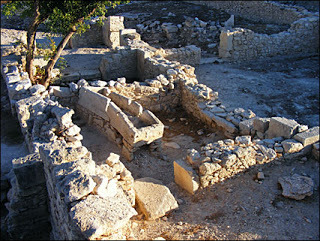
365 a great earthquake struck the eastern Mediterranean and destroyed the Roman city of Kourion on the island of Cyprus.

1313 Bridget the patron saint of Sweden who founded the Brigittine Order died. Bridget was a Swedish princess renowned for her piety from her childhood; she was given in marriage to Ulf, Prince of Mercia, by whom she had a large family. After Ulf's death in 1344 and with the help of King Magnus, she established on her own estate at Vadstena the first monastery for men and women, of which Katherine, her daughter, became the first Abbess soon after her death in 1375. At this time double monasteries were not unusual: the monks and nuns used the same chapel, but lived in separate wings of the monastery, the confessor alone having access to the nuns.

1540 Thomas Cromwell one of the strongest advocates of the English Reformation during the reign of Henry VIII was condemned to death without trial and beheaded on Tower Hill.

365 a great earthquake struck the eastern Mediterranean and destroyed the Roman city of Kourion on the island of Cyprus.

1313 Bridget the patron saint of Sweden who founded the Brigittine Order died. Bridget was a Swedish princess renowned for her piety from her childhood; she was given in marriage to Ulf, Prince of Mercia, by whom she had a large family. After Ulf's death in 1344 and with the help of King Magnus, she established on her own estate at Vadstena the first monastery for men and women, of which Katherine, her daughter, became the first Abbess soon after her death in 1375. At this time double monasteries were not unusual: the monks and nuns used the same chapel, but lived in separate wings of the monastery, the confessor alone having access to the nuns.

1540 Thomas Cromwell one of the strongest advocates of the English Reformation during the reign of Henry VIII was condemned to death without trial and beheaded on Tower Hill.
Published on July 23, 2015 01:30
July 22, 2015
Over 100 Rare Leather and Wooden Artifacts Found in Oxford Dig
 Archaeologists excavating in Oxford have found a stockpile of wonderfully preserved medieval leather and wooden artifacts, which is as good as gold in their eyes. They expect to uncover many more objects between now and this year's deadline in December.
Archaeologists excavating in Oxford have found a stockpile of wonderfully preserved medieval leather and wooden artifacts, which is as good as gold in their eyes. They expect to uncover many more objects between now and this year's deadline in December.Though they have only been excavating for about a month, they have uncovered at least 50 leather shoes, a complete leather bag, wooden posts, and a wooden bowl. These artifacts have all been well-preserved due to the Thames floodplain area being below the water level at the site. The incredible preservation of the artifacts has helped in dating the leather goods to approximately 700 years ago.
 Wooden bowl found at the Westgate site, Oxford, England (
Oxford Archaeology
)Oxford Archaeology project director Ben Ford has told BBC news that "These finds are as rare as gold and often as informative...they tell us about the everyday people, their lives, the objects they made and the clothes they wore."
Wooden bowl found at the Westgate site, Oxford, England (
Oxford Archaeology
)Oxford Archaeology project director Ben Ford has told BBC news that "These finds are as rare as gold and often as informative...they tell us about the everyday people, their lives, the objects they made and the clothes they wore."British Archaeologists Find First Ever Evidence of Cremation in Mesolithic eraNumerous skeletons of sexually perverse Nuns discovered in OxfordResearchers Explore Mysteries of Medieval Graffiti in EnglandDiscovery of Medieval Boat in England Hailed ‘Rare and Important’Project Officer, Rebecca Peacock has interpreted some of the finds for the Oxford Mail. She told the newspaper that, “The artifacts that we have found tell us an awful lot about how the people of Oxfordshire have been living over the past 700 years...From the shoes, pots and bags that we have found, we can see that Oxford was a small scale industrial town and that there has always been a lot of trade and work in the area.”
 Some of the artifacts previously found at the Westgate site are currently on display in a 'Pop-Up Museum' located near the site. (
Oxford Archaeology
) Ms Peacock also told the Oxford Mail that these artifacts suggest that there was a high quality of life and wealthier people have chosen to settle in the area for many centuries. However, some poorly made pottery also suggests that there was likely a large working-class in the area for centuries as well.
Some of the artifacts previously found at the Westgate site are currently on display in a 'Pop-Up Museum' located near the site. (
Oxford Archaeology
) Ms Peacock also told the Oxford Mail that these artifacts suggest that there was a high quality of life and wealthier people have chosen to settle in the area for many centuries. However, some poorly made pottery also suggests that there was likely a large working-class in the area for centuries as well.The location of the current Westgate Shopping Centre excavation was previously the site of the Greyfriars religious order's friary. The Greyfriars are a Franciscan religious order that constructed their friary just outside of the Oxford city walls in 1224.
This year's Westgate Excavations will complete in December. The Westgate development project is set to be completed in 2017, therefore there is still much time for new discoveries.
Archaeologists are keen to find more, as Ms Peacock told the Oxford Mail, “While we haven’t found any early settlements yet, we are hoping that we might find some houses and signs of life from the Iron Age."
If the current number of artifacts are any indication, archaeologists may be correct in their belief that 100s more are still waiting to be unearthed at the site.
Featured Image: Medieval leather shoes found at the Westgate site, Oxford, England ( Oxford Archaeology )
Ancient Origins
Published on July 22, 2015 06:07
Journey to Freedom by K. Meador - an excerpt

"What would your wife say if she saw us eating together?"
"She won't dare come out in public the way she looks. If she has the faintest blemish she stays in. She won't walk with me by the rail because of the salty wind and ht hot glaring sun, as she puts it. I, on the other hand, see it in a totally different light."
"And what kind of light is that?"
He looked off in the distance. "I see the sun shimmering off the water like a diamond. I feel the wind as a sweet caress. I watch to see what creatures I can spot under the water. And I dream. I dream of what it must be like to live down there with no demands on you."
"Why did you marry her?"
Amazon Link
An unlikely meeting...
Marrissa is running away, as fast as her feet can carry her. After enduring the abuse at the hands of her employer for years, she has finally found the strength to strike out on her own, and now she has been unceremoniously thrust into an adventure with a man she doesn't know. But things become more serious when she and her companion are taken in by the Cherokee. After enduring attempts on her life at the hands of a jealous wife, Marrissa must once again leave people behind and make her own way. But this time she might be leaving true love behind.
An undying devotion...
Greggory longs to be a free man. Facing the violent prejudices against him as a half breed, and running from the high price set on his head by the owner of the plantation he used to belong to, he never expected to find peace and happiness with the young woman at his side. But the more time he spends with Marrissa, the more he realizes she is the one for him, and when evidence points to her untimely demise, he vows to gain his freedom and love no one else. But fate might not be done with him yet, and Greggory may have a second chance at the life he first glimpsed in Marrissa's eyes.
A timeless love...
Set amid the tumultuous backdrop of the American Civil War, Journey to Freedom, chronicles the harrowing misadventures of two star-crossed lovers through nineteenth century America, battling violence, prejudice, and the inherent struggles of their time. Join author K-Trina Meador for a touching saga of love, faith, and survival.
Published on July 22, 2015 05:03



